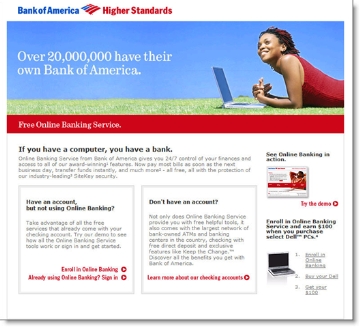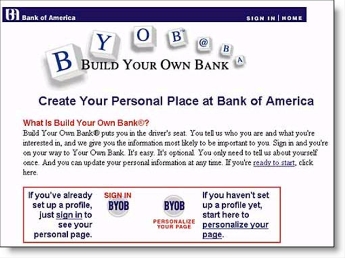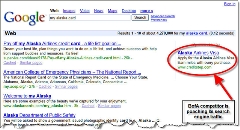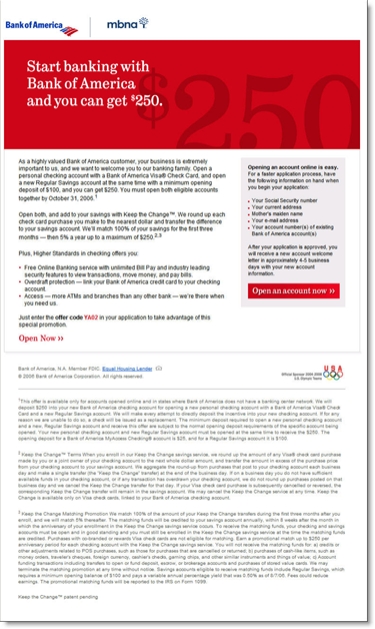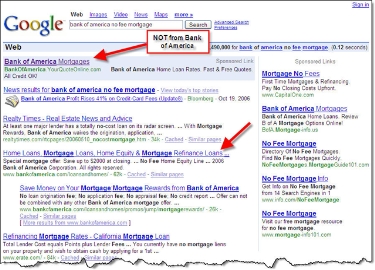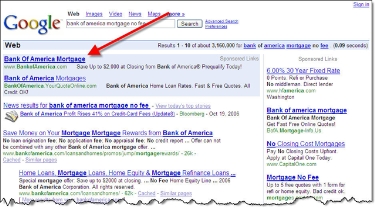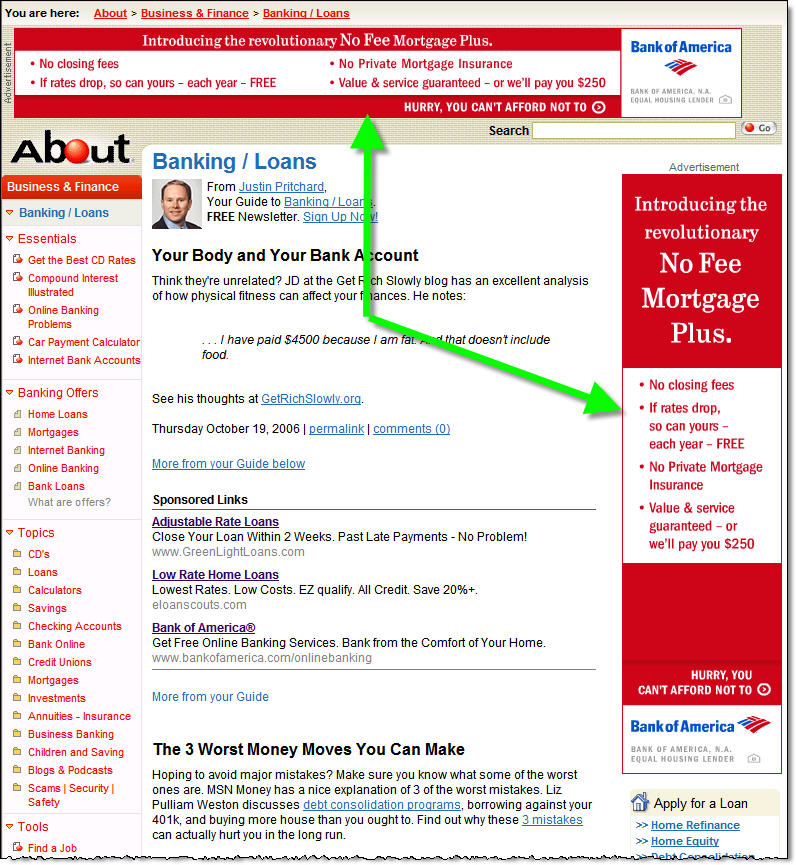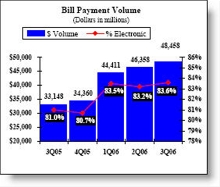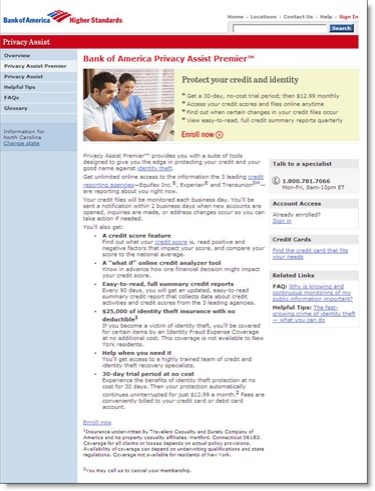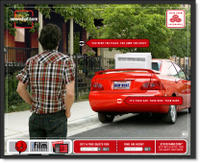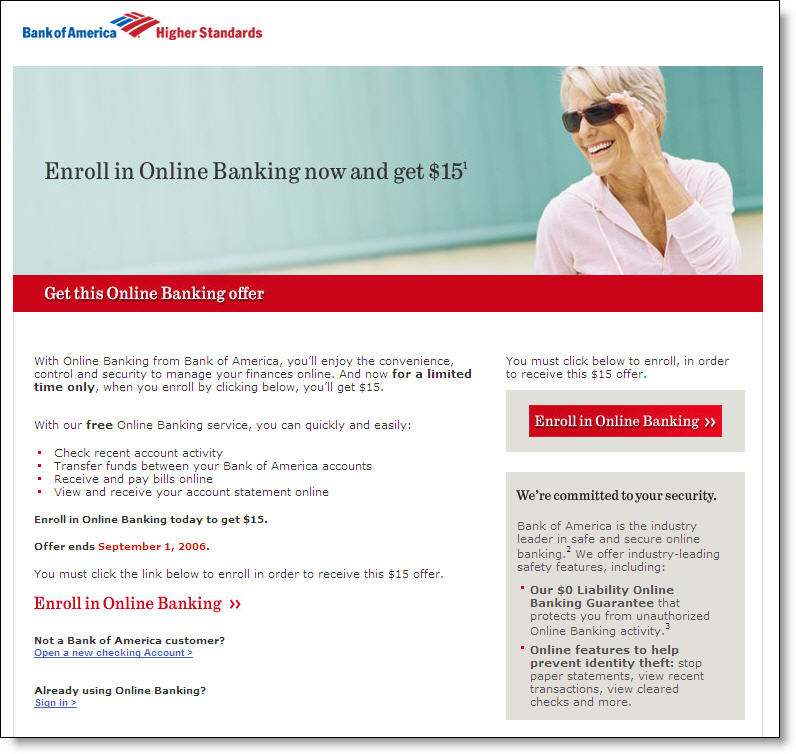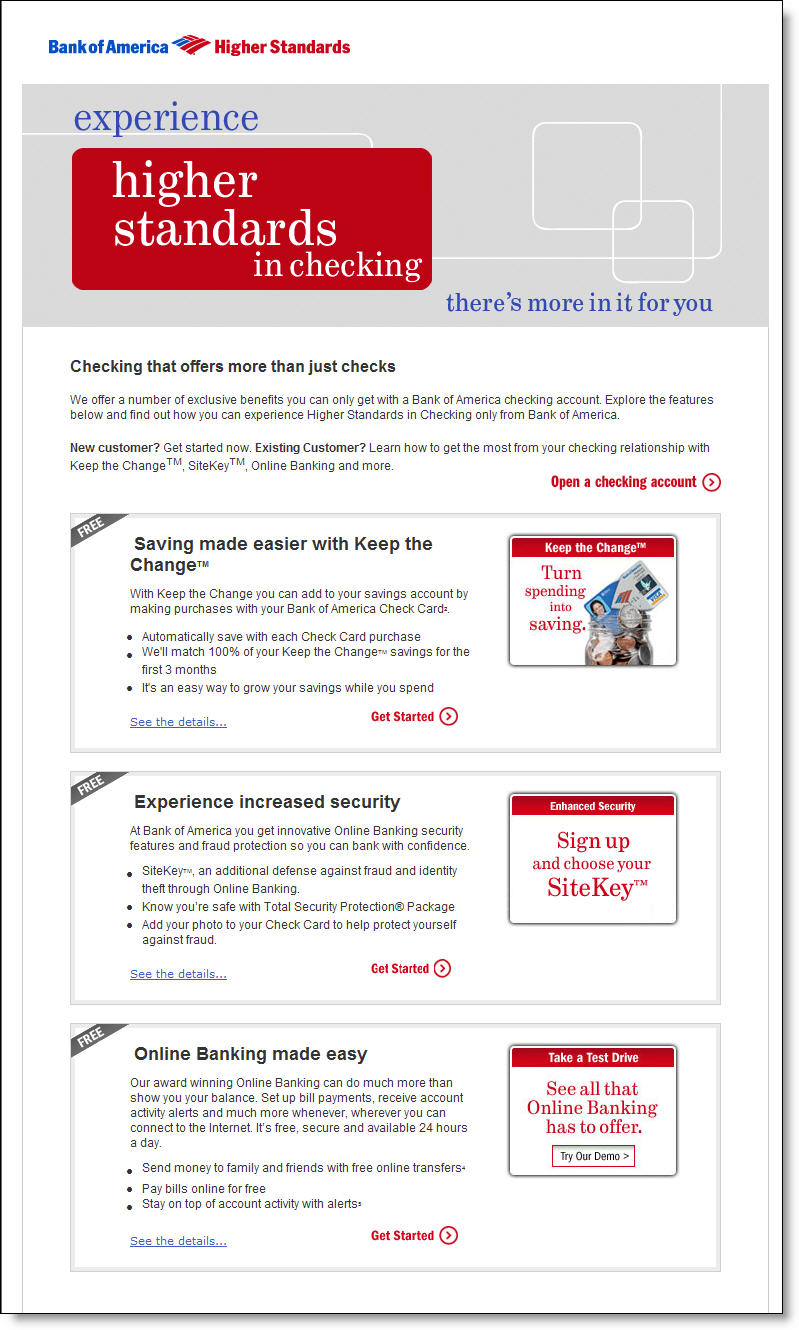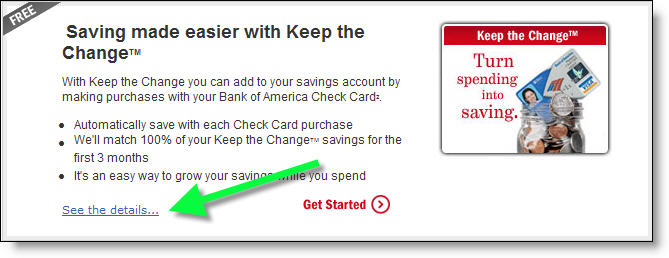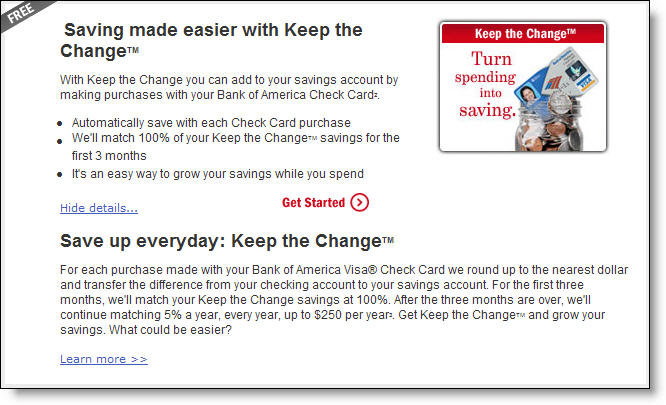Today's New York Times (p. A8, national edition) has a half-page, red-and-blue ad for Bank of America dominated by the headline:
If you have a computer, you have a bank.
The visual is a generic laptop with a generic browser displaying Bank of America's homepage. Text copy and sub-heads emphasized that 20 million are now using BofA online banking.
The ad-copy emphasized three benefits:
- Instant and free funds-transfer to anyone with a BofA account
- My Portfolio, the bank's account aggregation service
- Security features
Call to action: visit www.bankofamerica.com/yourownbank (see screenshot below).
Screenshot: Bank of America's landing page
(click to enlarge)
Analysis
There are several interesting things about this ad.
- No offer. The bank, which recently tested the richest new account bonus we'd ever seen costing it as much as $300 per new checking account, offers NOTHING. And this is an ad on black Friday, where stores typically offer monster loss-leaders to lure customers into their stores early on the biggest shopping day of the year.
- Account aggregation featured: I can't recall the last time a major bank featured account aggregation as one of the three biggest benefits of banking online. Could this mean that BofA is going to begin emphasizing the feature more in its national advertising? If so, it could reinvigorate the service.
- Customization deja vu : The "yourownbank" landing page is reminiscent of the bank's late-90s website-customization engine called Build Your Own Bank (see 1999 screenshot below). Given the landing page URL, we thought BofA might be pitching customization again, but it's really just a play off the ad's headline, that your computer is now your bank.
Taken together, it's an interesting effort, although it looks more like corporate branding rather than an effort that will generate enough accounts to justify the five-figure tab to the NY Times.
Screenshot: BofA's Build Your Own Bank from 1999
(click to enlarge)
